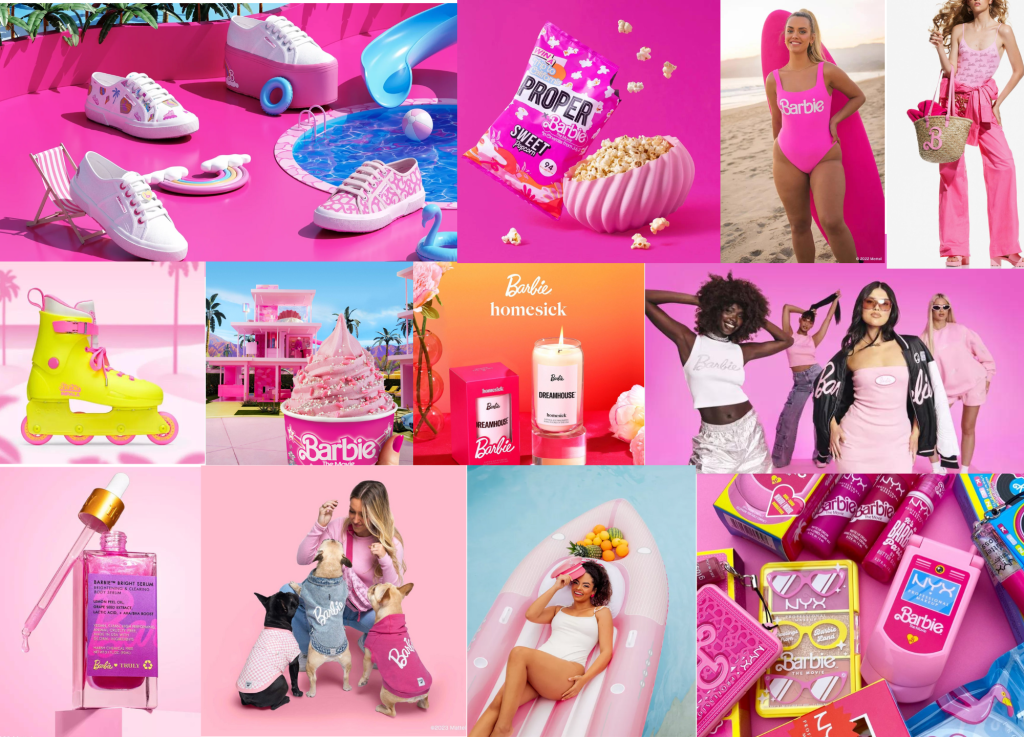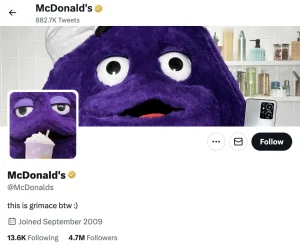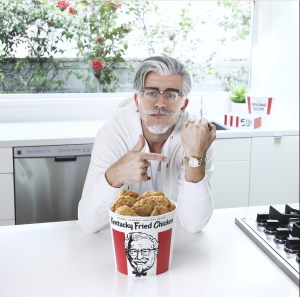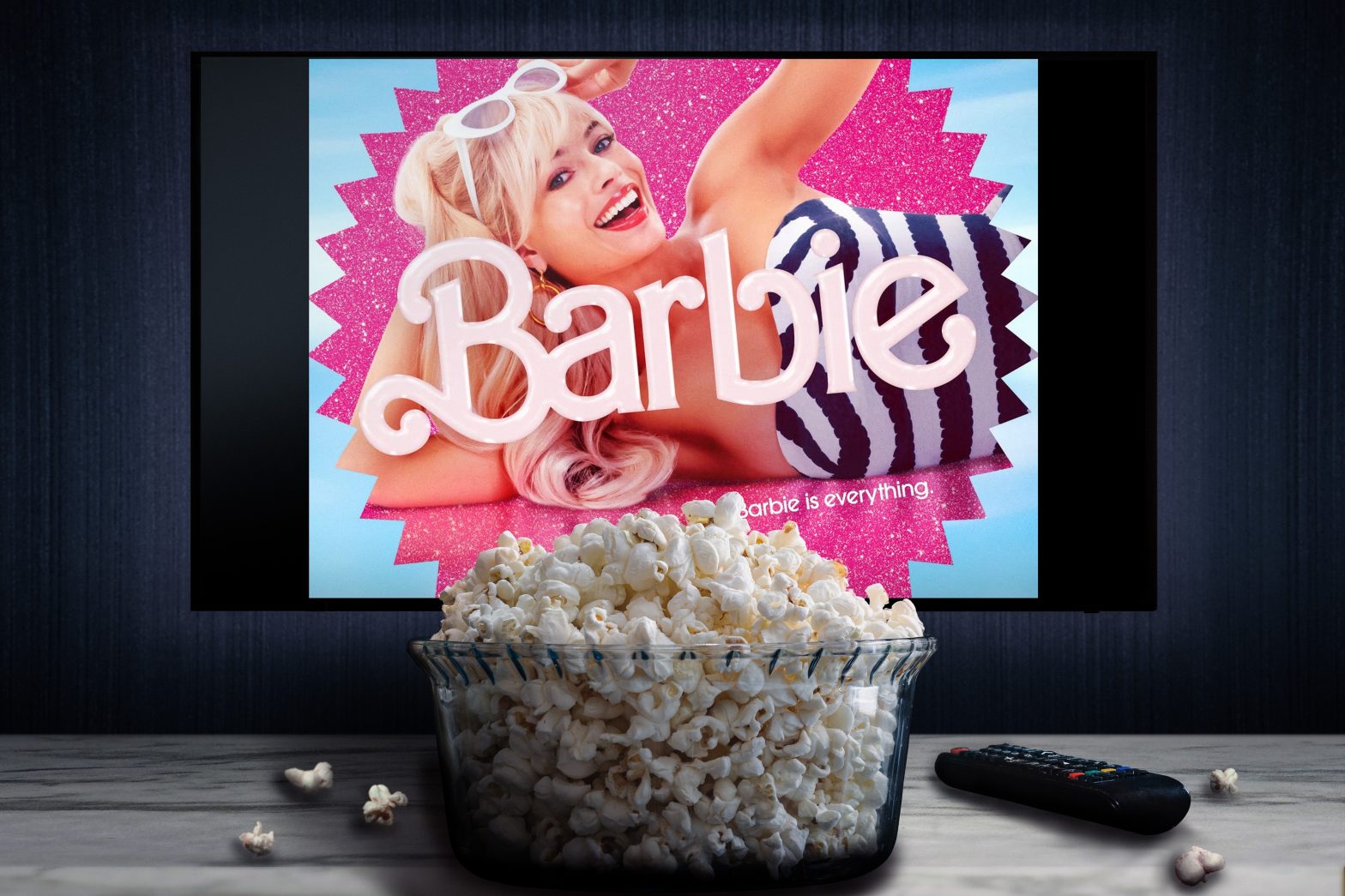Unless you have been living under a rock for the past few months, you’ve most likely heard about the new Barbie™ live-action film. This movie is not only shaping up to be a summer blockbuster, but is also breaking new ground in marketing through an ambitious campaign that features hundreds of collaborations across a wide variety of categories and channels.
So, just how did Mattel – a 78-year-old toy brand – turn the world’s best-selling doll into an Influencer character with a net worth of over $6.12M?
Transmedia Storytelling is a powerful tool content creators use to share a single story across multiple platforms and formats. By doing so, creators expand the universe in which their story exists, and provide multiple entry points for their audiences.
Mattel has used this tool to turn Barbie’s world into an astounding success through transmedia storytelling. Since her inception, Barbie has existed across different platforms, leading up to the highly-anticipated live-action film set to release this Friday, July 21st. Starring Margot Robbie as Barbie and Ryan Gosling as Ken, the movie is predicted to be the highest-grossing film of the summer earning between $215 million and $319 million in box office revenue.
Barbara Millicent Roberts (Barbie’s full name) was “born” on March 9th, 1959, and was an instant celebrity. But, even in the beginning, she was so much more than just a pretty face.
Barbie has always represented a multidimensional character. In her original format, her plastic universe expanded and evolved, allowing her to take on various roles, such as doctor, teacher, astronaut and pediatrician. She lived in different types of residences and owned vehicles ranging from a convertible to her very own plane, and her storyline grew alongside her expanding universe. Soon, other characters like Ken became part of Mattel’s universe, with each character bringing their own unique storyline to add to the mix.
In addition to being an empowering symbol for girls due to her seamless transition between careers, Barbie has been a powerful advocate for inclusivity. The doll is now available in 35 different skin tones, 97 hairstyles, and 9 different body types. And Mattel has subsequently introduced dolls with down syndrome, differently-abled characters, and dolls with permanent physical disabilities, including a doll with a wheelchair and another with a prosthetic leg.
Starting in the late 1980s, Mattel expanded Barbie’s universe by creating a series of popular video games and 40 CGI-animated movies, turning her into a movie star in her own right. Throughout the movies, which were first released on TV and are now available on streaming platforms, Barbie portrays a wide range of characters, from fairies to pop stars, and each film takes place in a standalone universe in which Barbie is the unifying story element.
On October 8, 2005, Mattel expanded the reach of Barbie’s universe to the internet. As an online personality, Barbie maintains an active presence on YouTube through her Barbie Vlogs channel. The channel boasts 11.4 million subscribers and over 4 billion views as of July 13, 2023. In her vlogs, Barbie shares content just like any human influencer, discussing her life, vacations,friendships and more. She provides cooking demos, Q+As, and DIY tutorials, turning her into a successful Virtual Influencer.
And now, Barbie’s journey as a transmedia character extends to live-action movies as well.
The 2023 live-action film, written by Greta Gerwig, brings Barbie and Ken into the real world, marking the first time Barbie has transitioned from her utopian world and into reality. Advertisers have jumped at the chance to leverage her celebrity and the film has generated numerous brand collaborations, further exemplifying the transmedia value of the Barbie story.
Here are some examples of brands collaborating with Barbie™

The transformation of Barbie over the years, culminating in the extensive array of collaborations, demonstrates her tremendous influence and the success her story achieves across multiple platforms. These examples highlight Barbie’s significant role in driving consumer purchasing decisions and “Barbie-Mania” remains vibrant and impactful over 60 years after the introduction of the original doll.
However, Barbie is not the only beloved character to undergo a transformation journey through transmedia storytelling.
The iconic Colonel Sanders, known as the logo for KFC for years, is now a Virtual Influencer. McDonald’s recently launched their character Grimace as part of their Pride campaign, and Kellogg’s Tony the Tiger is a VTuber on Twitch.



These are but a few examples of how Virtual Influencers can effect change in the future of Marketing, and how implementing transmedia storytelling can further enhance reach and impact. A multi-channel presence allows consumers to connect with a brand on various levels and feel like they are a part of the story, rather than just observers.
At Hylink, we firmly believe in the power of transmedia storytelling as a potent tool to boost your brand’s influencer campaigns. We are committed to changing the narrative around Influencer Marketing by providing comprehensive knowledge on Virtual Influencers and their impact on the future of Marketing…
For now, we will be hitting the movie theaters to see the Barbie opening and maybe even venture into a 5hr commitment of a back-to-back opening thanks to the “Barbieheimer” phenomenon.
